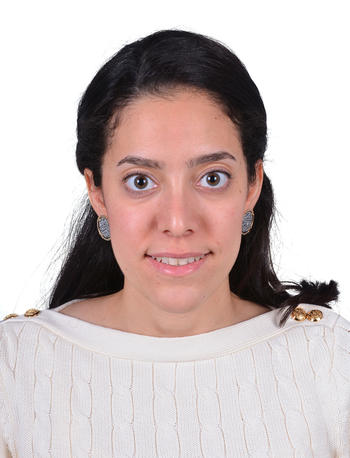Pharmacist Yomna Nassar

Institute of Pharmacy
Clinical Pharmacy & Biochemistry
Curriculum Vitae
|
7/2019-Present |
Doctoral student at the Graduate Research Training Program “PharMetrX: Pharmacometrics & Computational Disease Modelling“ at the Dept. of Clinical Pharmacy & Biochemistry supervised by Prof. Dr. Charlotte Kloft at the Freie Universitaet Berlin |
|
9/2013-6/2019 |
Pharmacist specialist at the Department of Pharmacology-Medical Research Division National Research Centre, Giza, Egypt |
|
2/2012-6/2019 |
Senior Clinical Research Associate Pharmagene Specialized Analytical Services; a CRO focusing on bioequivalence studies, pharmacokinetic studies and bioanalysis |
|
9/2016-9/2017 |
Visiting Master student UCL Great Ormond Street Institute of Child Health, London, UK |
|
2015-2017 |
MSc in Experimental Therapeutics Kellogg College, University of Oxford, Oxfordshire, UK Dissertation title: Pharmacometrics of treosulfan in children undergoing haematopoeitic stem cell transplantation |
|
2006-2011 |
Bachelor degree of Pharmaceutical Sciences Faculty of Pharmacy-Ain Shams University, Cairo, Egypt |
|
2006 |
General Certificate of Secondary Education (Science section) Ramses College for Girls, Cairo, Egypt |
Optimising dosing strategy of paclitaxel in NSCLC
Non-small cell lung cancer (NSCLC) accounts for approximately 85% of all lung cancer cases. Paclitaxel, a taxane derived chemotherapeutic agent, in combination with platinum containing drugs (e.g. cisplatin or carboplatin) have been routinely used as a first-line treatment in patients with advanced NSCLC. Nevertheless, successful treatment is often hindered by dose-limiting toxicities such as neutropaenia and neurotoxicity. Therefore, it is important to have tolerable paclitaxel concentrations that do not hinder treatment efficacy and at the same time maintain a tolerable toxicity profile.
To achieve this, the timely prediction of treatment outcome (e.g. tumour response to treatment, overall survival,… ) is needed. Therefore, time course pharmacokinetic/pharmacodynamics models of prognostic treatment markers (i.e. biomarkers) will be developed and relevant metrics that best predict treatment response will be evaluated. These efficacy models will then be combined with other toxicity models of neurotoxicity and haematotoxicity to evaluate the clinical utility of paclitaxel-based treatment. This joint description of the risk of toxicity and efficacy will help identify more ideal dosing schedules that can minimise incidence and severity of relevant toxicities and simultaneously retain clinical efficacy.
I hope that with this work, the timely identification/prediction of disease progression/regression would consequently prompt favourable interventions to avoid unnecessary side effects or ineffective treatment and that evaluating the risk of dose-limiting, treatment-related toxicities in relation to treatment efficacy would eventually identify safe and effective dosing schedules.